The start of a new astronomical year generates enormous excitement for what the months ahead will offer, and this is our guide to stargazing in 2024.
Here are the top night-sky delights that 2024 will serve up and the best stargazing events to look forward to.
2024 has the potential to be a memorable year for amateur astronomy, so let's take a look at what the sky has to offer, season by season.
For more advice, read our guides to visible planets in the night sky and astronomy for beginners.
And get regular updates by listening to our weekly Star Diary podcast and signing up to receive the BBC Sky at Night Magazine e-newsletter
Winter

Planets
Astronomically, the first half of 2024 will be fairly leisurely, with several bright comets as the highlight.
The Solar System dominates 2024, but not always in an obvious way.
At the beginning of the year, Jupiter and Uranus rule the roost early evening, the rest lost to the Sun’s glare.
They begin to lose altitude as darkness falls through February, becoming very low towards the end of March.
After this, the major planets will be off the menu for several months, but you can find out more in our guide to visible planets in the night sky.
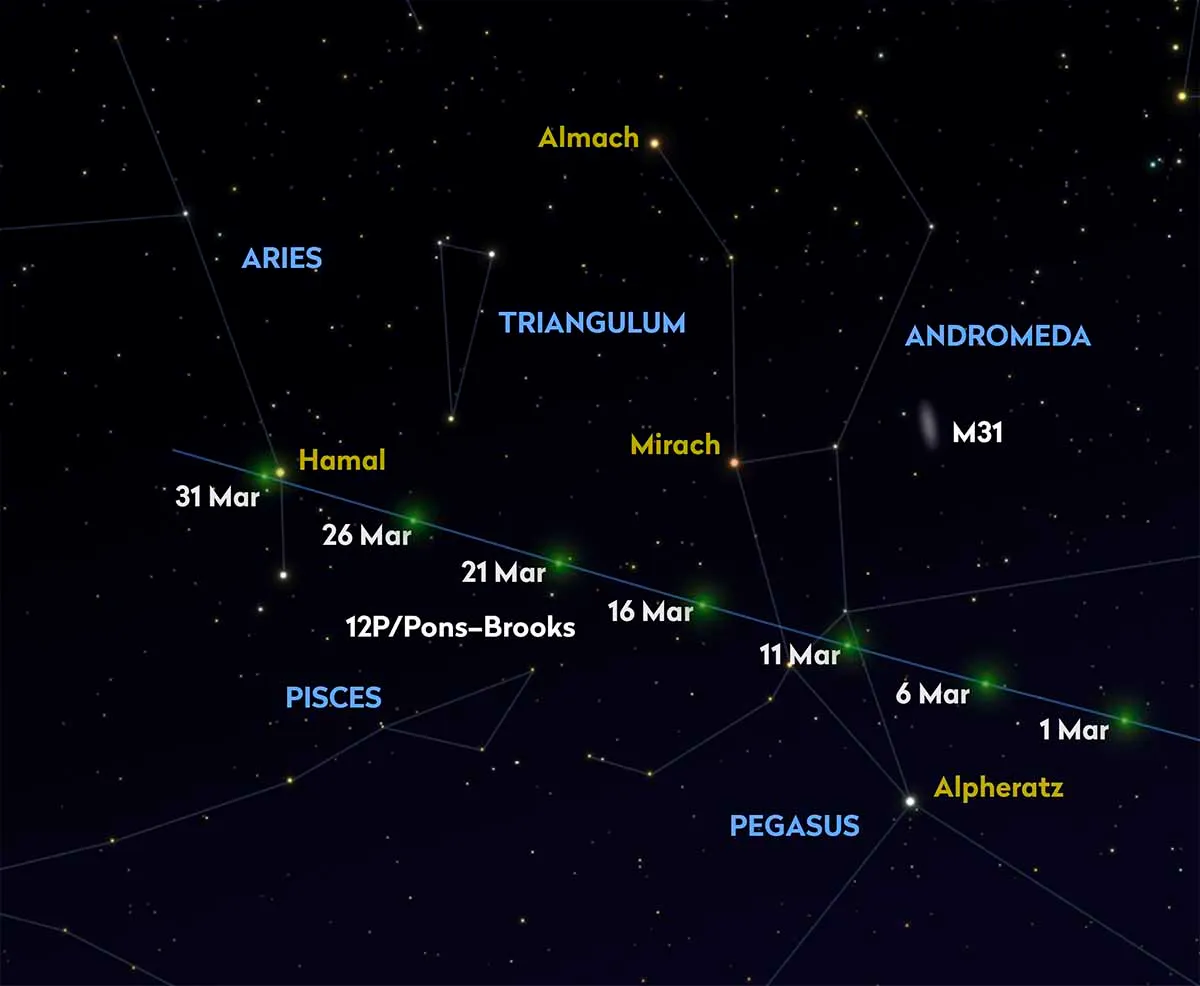
Comets
Balance is restored in unusual form with a number of interesting and bright comets on view.
A ‘bright comet’ typically means an object visible through binoculars or a small telescope.
There are currently also two potentially naked-eye comets in 2024, and you can find out about these in our guide to comets in 2024.
Meteor showers
Meteor showers occur when Earth passes through orbital debris from a comet, and the first major display of the year is the Quadrantid meteor shower.
A last quarter Moon will affect visibility this year, but some activity should be seen.
The peak is predicted for 10:00 UT on 4 January, with heightened activity lasting a few hours either side. The best observing will be in the early morning that day.

Stars
The winter night sky is dominated by Orion, its Belt stars pointing down (southeast) towards the brightest night-time star, Sirius (Alpha (α) Canis Majoris) the ‘Dog Star’.
Sirius has a white dwarf companion called the ‘Pup’.
Locked in a mutual 50-year orbit, the apparent separation between Sirius and the Pup is currently near maximum, meaning 2024 is an excellent year to try to secure a view.
Maximum separation is 11 arcseconds, the challenge being the glare from Sirius that washes out the mag. +8.4 Pup.
The Northern Hemisphere’s spring equinox is on 20 March 2024, when the Sun crosses the celestial equator heading north. This is when the length of the nights shrinks at its fastest rate.
Spring
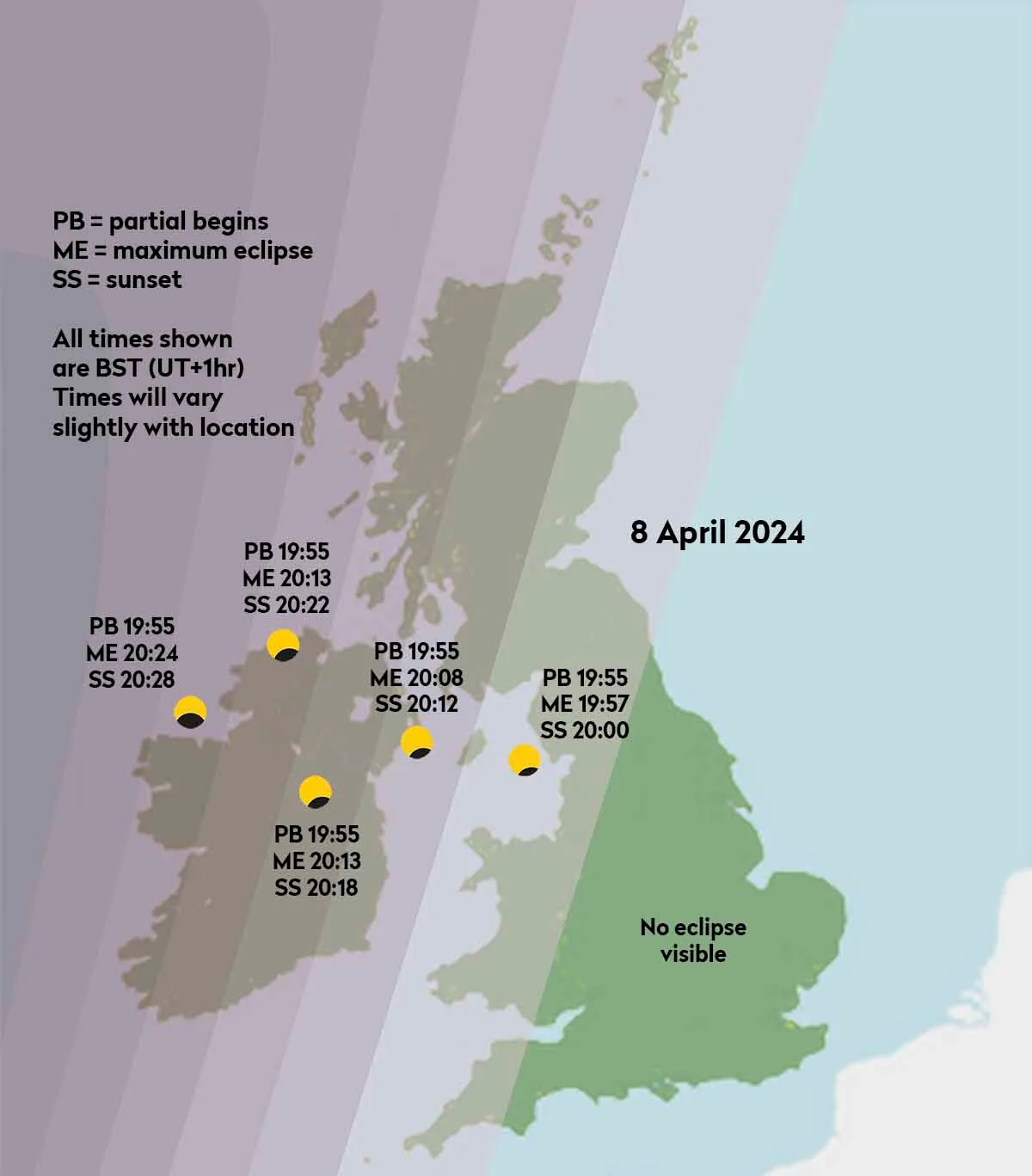
Solar Eclipse
April’s headlines will be dominated by a total solar eclipse crossing the USA on 8 April, their second in less than seven years.
Very little matches the spectacle of a total solar eclipse and from the UK we’ll no doubt get to see it via news outlets and social media.
However, it’s possible to get a taste of what’s happening live if you’re located in the west of the UK or visit the Republic of Ireland, where a small partial solar eclipse will be visible.

The Sun
As spring progresses, the Sun rises higher in the UK’s sky, bringing it into a good position for solar observing.
Safety filters are required and must be fitted correctly to protect your equipment and eyes.
With the peak of the next solar cycle predicted for mid 2025, this is a great time to get acquainted with our nearest star.
The Moon
The early phases of the Moon are well presented during spring months and the thin lunar crescent is a beautiful sight in the evening twilight.
There are numerous well-timed lunar clair-obscur (light and shadow) effects visible early in 2024 too, making them good stargazing targets to consider.

Meteor showers
Significant meteor activity returns in April with the Lyrid meteor shower, but sadly the presence of a bright Moon will mar the display.
This won’t be the case for the Eta Aquariid meteor shower, which is expected to show peak activity on the evening of 5 May.
Its radiant is low in Aquarius and from the UK the best activity will be had just before dawn on 6 May.
As we head towards June, we look forward to the return of the Northern Hemisphere’s noctilucent cloud season.
In 2023, good displays were few and far between, an interesting observation in its own right. Will this trend continue into 2024? We’ll have to wait and see!
Summer
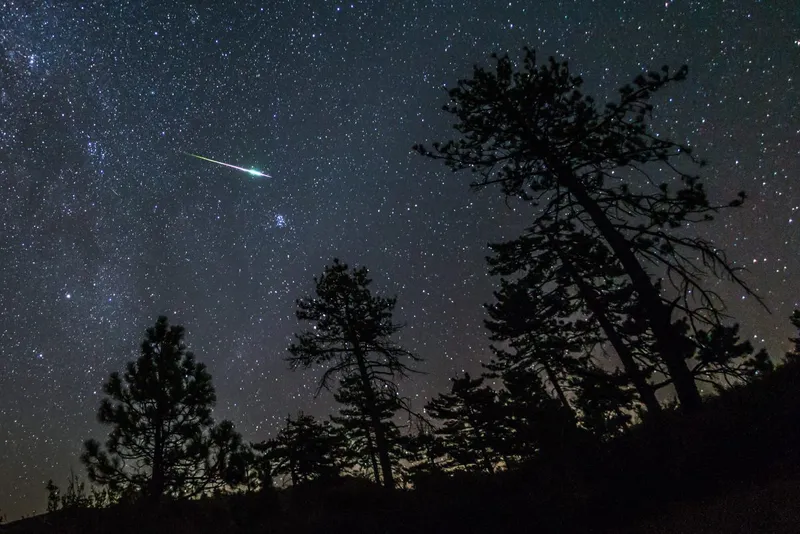
Solar System
As we enter the second half of 2024, there’s a change of pace.
The planets start to reappear, providing an early-hours spectacle in Taurus.
Here you’ll have Mars, Jupiter and Uranus arranged near the bright naked-eye open clusters of the Pleiades and Hyades.
The passage of the waning crescent Moon through the area will produce an amazing pre-dawn scene at the end of July.
The mornings of 30 and 31 July are definitely dates to put in your calendar if you have a camera!
This could be taken to another level if there’s a late noctilucent cloud display in the region too.
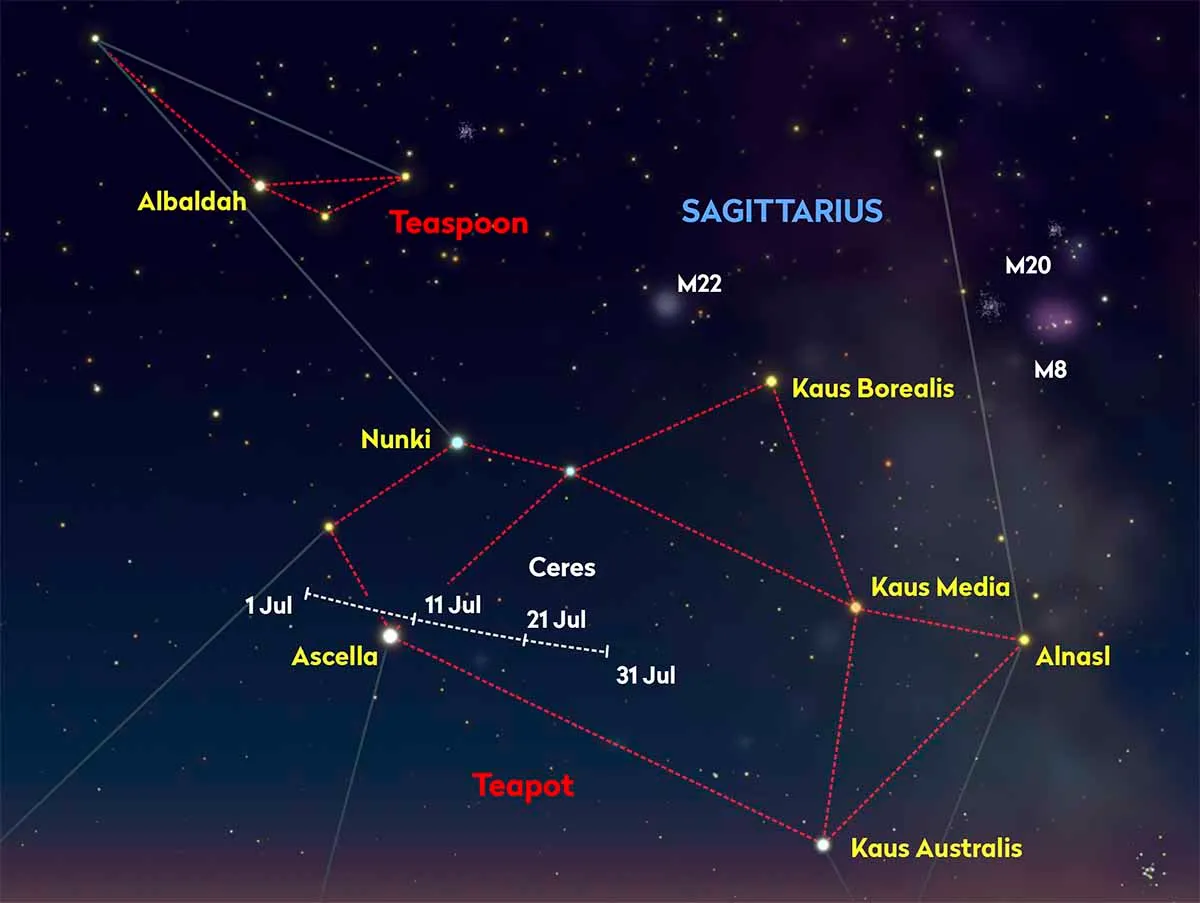
Dwarf planet Ceres reaches opposition on 6 July 2024, shining at a binocular-friendly mag. +7.3 in Sagittarius, although low in the UK’s sky.
It does pass through the lower handle of the Teapot asterism and this should make it easy to locate.
August sees the excitement ramp up to a greater level.
Meteor showers
The Perseid meteor shower is predicted to peak in the afternoon of 12 August, making meteor watches on the nights of 11/12 and 12/13 August ideal for grabbing the best from this annual favourite.
A first quarter Moon sets early enough to avoid interfering with the shower.

On the morning of 21 August 2024, a just past full Moon occults Saturn – a rare event last seen from the UK on 22 May 2007.
The planets continue to improve through September, Jupiter reaching 60° altitude under dark-sky conditions from the UK.
The Moon puts on a show during September as well, undergoing a small partial lunar eclipse in the early hours of 18 September.
This month will also see a lot of excitement and hype surrounding the perihelion approach of comet C/2023 A3 Tsuchinshan–ATLAS.
Autumn
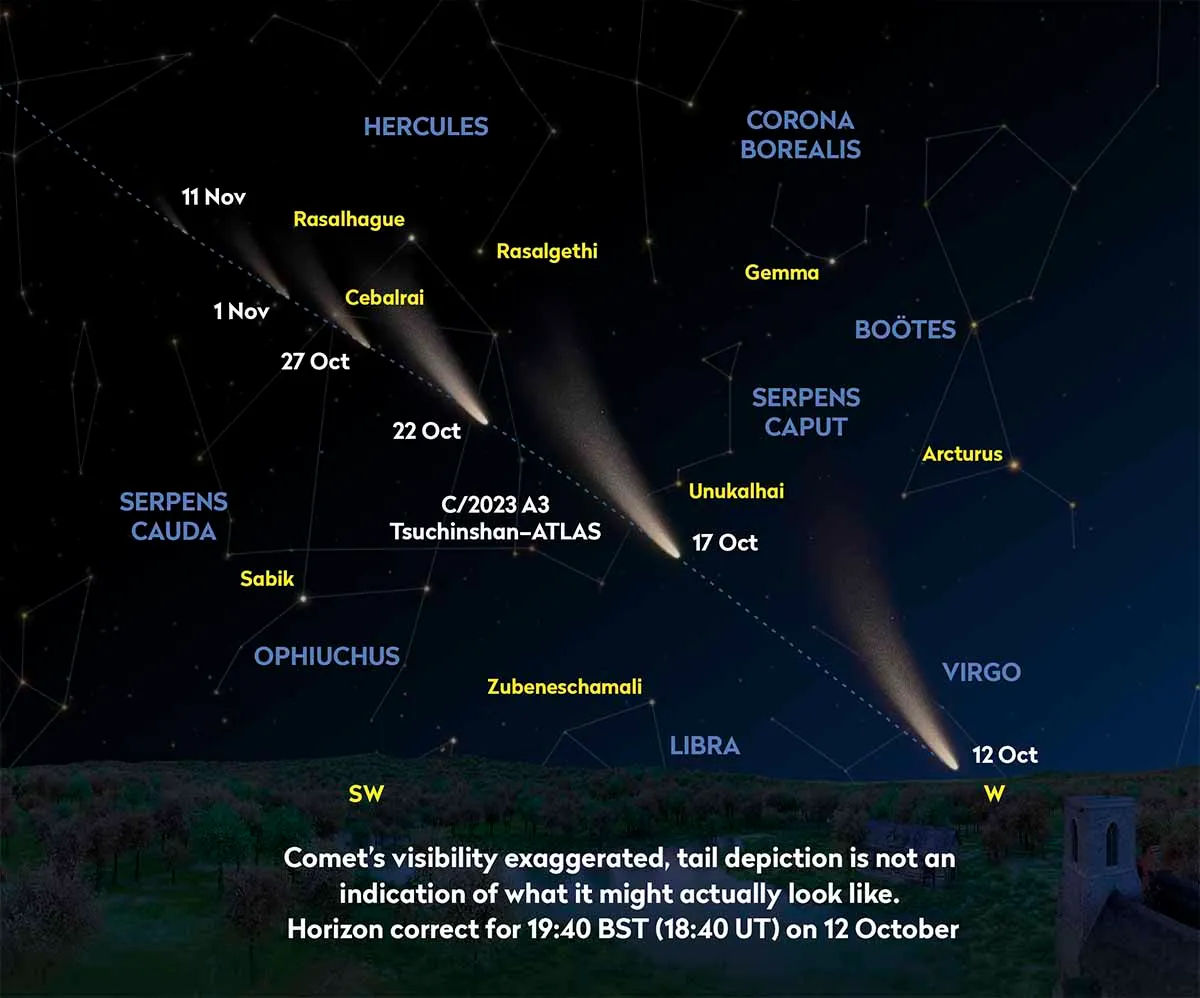
Comets
October’s highlight will be comet C/2023 A3 Tsuchinshan–ATLAS.
Whether it becomes bright enough to be viewed with the naked eye or even bright enough to be a spectacle remains to be seen, but the anticipation will be palpable.
The best times to observe C/2023 A3 Tsuchinshan–ATLAS from the UK will be in October evening skies.
Post-perihelion it may put on something of a show, but then again it may not!
Solar System
The bright planets will be spectacular in the autumn of 2024 and well presented for UK observation.
The inner Solar System also begins to join in, Venus slowly but surely edging into the evening twilight sky.
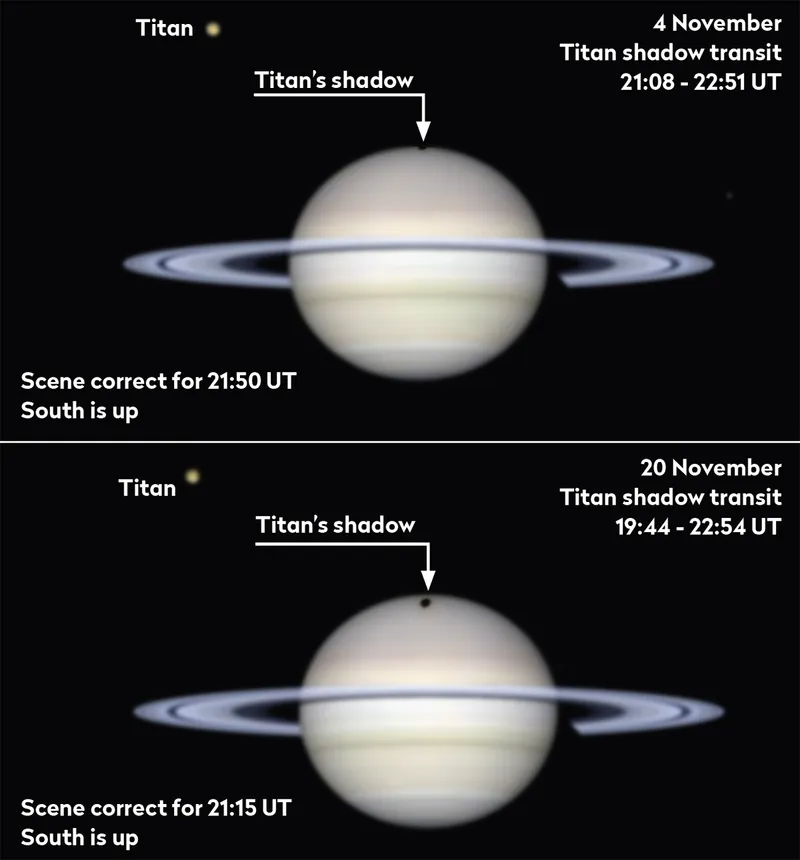
We’re fairly accustomed to the four Galilean moons of Jupiter interacting with their host planet.
However, interactions between Saturn’s larger moons and Saturn are less common, especially its largest moon Titan.
As Saturn approaches a ring plane crossing in 2025, when the rings will be seen edge-on from Earth, Titan’s orbit will also appear edge-on.
During November and December 2024 there are several well-timed chances to spot Titan’s shadow transiting Saturn’s disc, a prelude to a series of Titan transits in 2025.
In addition, Saturn is now gaining altitude when due south as seen from the UK, raising it out of the wobbly atmosphere that has plagued views for many years.
Having been on the sidelines away from opposition for many months, Mars is now becoming prominent ahead of its next opposition on 16 January 2025.
As it establishes itself in the morning sky ahead of opposition, Mars brightens rapidly.
This is great news for a lunar occultation of the planet on the morning of 18 December.
Although the event takes place with the Sun up, at mag. –0.9 Mars should be relatively easy to see with optical aid under cloud-free skies.
What are you observing while stargazing in 2024? Let us know by emailing contactus@skyatnightmagazine.com

